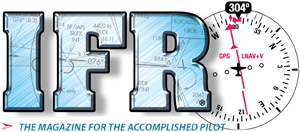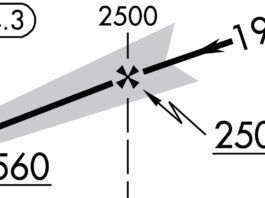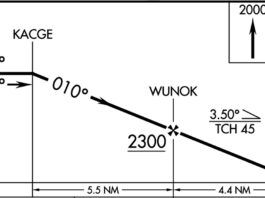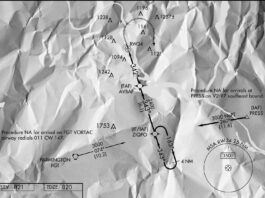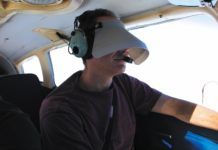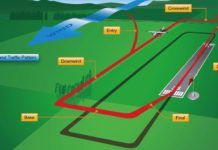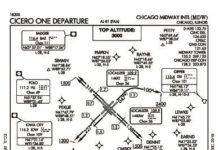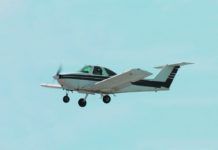Dissecting T-Storms
A fter a record winter where temperatures fell below -30 degrees F in some parts of the Midwest, its hard to believe summer is approaching again. That means a rapid increase in thunderstorm activity across the country. In this issue our goal is to help you not only understand the parts of a storm but also whats going on underneath the hood and what it means for the forecast. The information also might help save your bacon when things go downhill unexpectedly and all the data you have is whats out the window.
BasicMed Safety Pilot
When we got BasicMed, something wed done for a long time was taken away. BasicMed applies to acting as pilot in command. But, with BasicMed youre not legal to act as a safety pilot for your buddy whos under the hood practicing approaches in VMC. So, you exercise the workaround of agreeing ahead of time that you, the safety pilot, are indeed the PIC for this flight (more on that in a moment), then youre once again good to go even with BasicMed ... if, that is, the aircraft insurance agrees. Lets look more carefully at all this.
Just Say It: Unable
ATC will often ask pilots if they can do something somewhat out of the ordinary for the purpose of granting a shortcut or maybe to gain that extra slice of airspace. This subtle word works on both sides of the coin. In the pattern, Tower might ask a pilot to fly a short approach that-if the pilot is unprepared and accepts it-requires a steep and fast dive. Perhaps youve been offered that so they can fit you inside of other traffic, to avoid vectoring you 10 miles out to get behind everyone. Or, perhaps they just need you to cross the approach end of the runway so they can start getting other airplanes out. Regardless, if you dont think you can safely and properly comply, bring on the PIC authority and just say it, Unable.
Human Factors
About 30 minutes into these touch and goes, one requested a stop and go. I could not have five aircraft doing touch and goes with one doing a stop and go; it would mess up the pattern and Id be making student pilots do a lot they didnt need to. So, I come back with, Unable. I have five of yall. He came back with, Well we need to do stop and goes for training. I thought about putting that one airplane on the other runway, but I had started to have a line of departures and arrivals. Unable, I repeated. I thought the matter was closed, as it should have been.
Cell Encounterpoint
The answer given in question 2 of the quiz in your November 2018 issue (continue to fly straight through the storm) is incorrect. Fifty years ago I wrote and published the initial research papers on transmitting weather information into the cockpit after almost losing my life due to a thunderstorm. As a nationally recognized aviation radar/weather spokesperson, I continue to educate and update pilots around the country as the program progresses. The history of the Datalink program is best presented by AOPAs video on YouTube. Search for datalink concept to cockpit.
Party in the Pattern
Likely you either practice approaches to non-towered airports or fly into airfields with part-time control towers. Non-towered airports, hotbeds of GA activities, present our greatest risk of a midair collision; a risk mitigated by a disciplined adherence to procedures (proper entry into landing patterns, proper departure patterns) and proper use of the UNICOM frequency at uncontrolled airports. (FAA Aviation News, May/June 2001) Therefore, its important that instrument pilots play nice around the pattern. The updated AC 90-66 covering non-towered airports specifically identifies instrument pilots, maybe because of some past misbehavior.
Up In Upper Michigan
For those unfamiliar, the Upper Peninsula of Michigan boasts generous lengths of shoreline off Lake Superior, scenic byways, and lots of trees. While it can be a winter wonderland during the off-season, its not unusual to have many days of dreary gray skies and fog that wears away the most sanguine spirit. Its the kind of weather that gets us burning through a whole morning figuring out how to get out, around and back without getting stuck who-knows-where. Welcome to the UP.
How Much Is Enough?
Removing the old autopilot will leave holes in the left panel that would be too ugly if we just covered them, so were going to cut new metal. Since were doing that, the shop has suggested we might consider replacing the backup analog airspeed indicator, attitude gyro, and altimeter with an integrated electronic standby instrument. Yeah, thats probably a good idea, especially right now, as the vacuum attitude indicator has been slow to come alive recently and is probably about to die.
March 2019 Killer Quiz: Ramblin’ Around
Click the preview image below to take our new and improved Killer Quiz from IFR Magazine!
Depart Midway, Again
Our February 2018 clinic (Chicagos Scenic Route) discussing a particular procedure at Chicago Midway International led to some reader mail about what should happen. The Midway Three departure for Runways 4L and 4R, if interpreted on its face, would have indeed involved extra maneuvering just after takeoff, as we discussed. It has since been noted that this DP calls for a more logical sequence of steps to make it work. So we went back to take another look at the Midway Three along with the other DPs published there. The charts have since been updated a little to clarify when, where, and how high to go.
Ceiling and Visibility
These early pilots depended on a network of rotating beacon towers at four-mile intervals, like lighthouses in the sky. These facilities, operated by the federal government, used lamps powered by cylinders of acetylene. Simply by following the route from beacon to beacon, a pilot could arrive safely at the destination. Weather could be avoided because the planes flew at low altitudes, and illuminated diversion airfields were placed at frequent intervals. If the pilot felt things were deteriorating, he could be on the ground in less than 10 minutes.
Old Friends
Look around the ramp and in hangars at almost any GA airport in the country, and youll find some amazing aircraft. Youll also find some once-amazing aircraft that have been neglected and nearly abandoned for years, rendering them useless place holders. Sadly, one of those in the latter group belongs to my wife and me. (Its a Beechcraft Skipper we got for my wife to fly after we invested in the Cessna 340 Ive talked so much about.)
